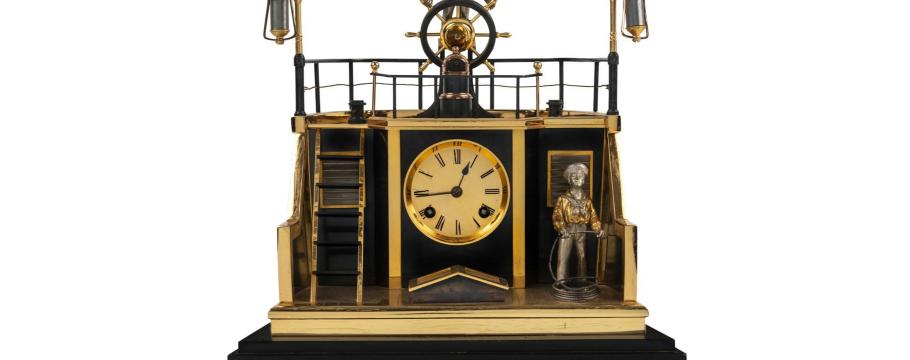

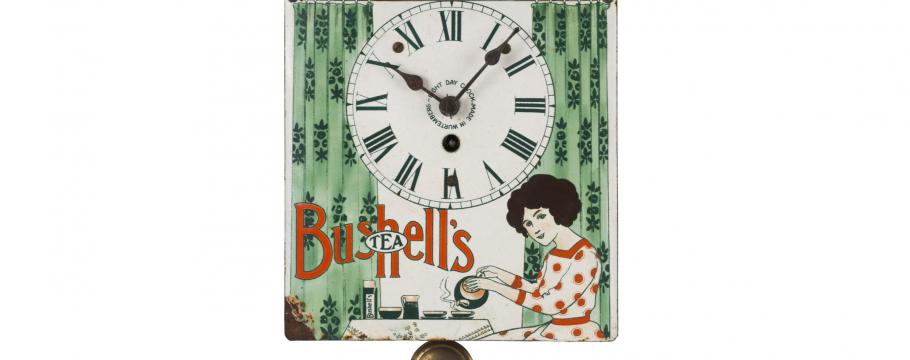
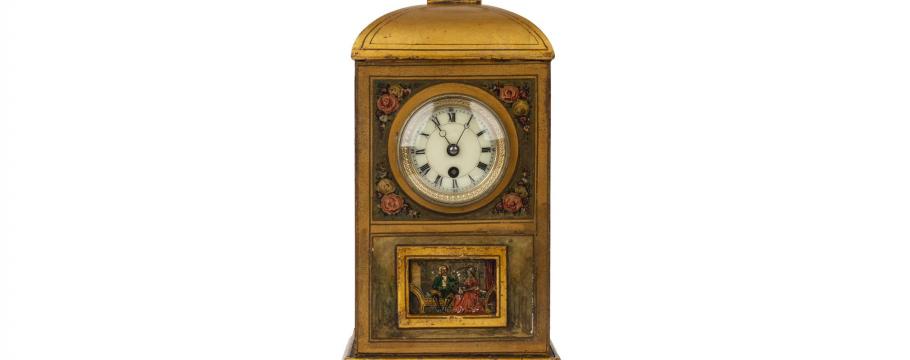
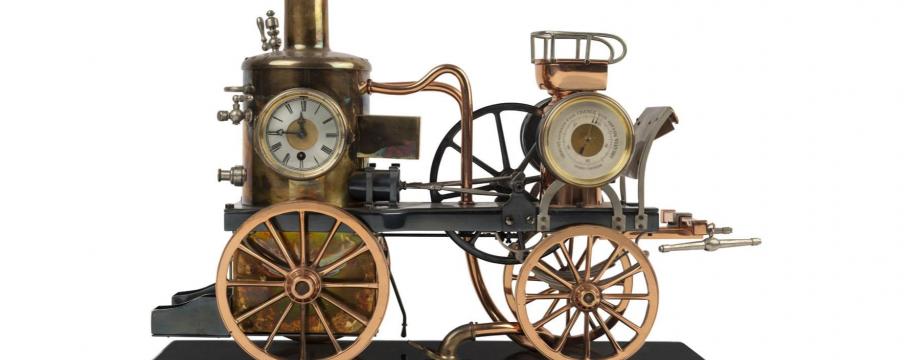
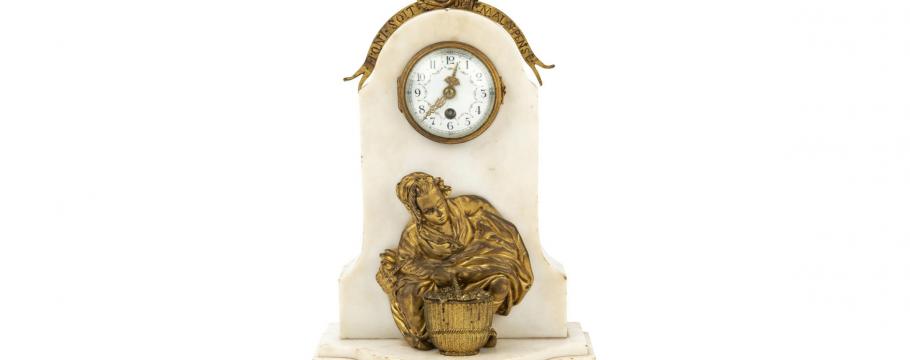
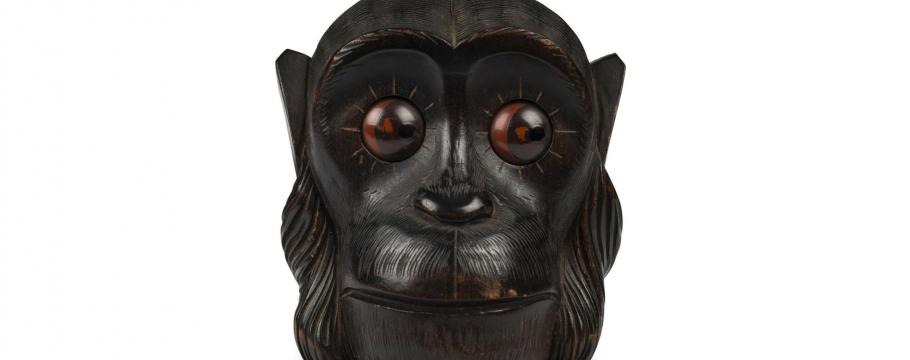



Rare Australian clock auction testimony to a fascinating past
Author: Richard Brewster | Posted: 5th September, 2019
Legendary Australian businessman and underworld figure John Wren (1871-1953) – made famous thanks largely to a fictionalised account of his life in Frank Hardy’s 1950 novel Power Without Glory and remembered from the early 1900s for his Johnston Street, Collingwood horse racing gambling venture which eventually earned him $40,000 a year – will make an unforgettable impression on Leski Auctions forthcoming Fine and Rare Clocks sale.
The auction, from noon Sunday September 15 at 727-729 High Street Armadale, includes an impressive French mantel timepiece adorned with bronze figures, engraved with an unusual Australian coat of arms and weighing more than 76 kilograms that sat on the dining room mantelpiece of Wren’s Collingwood hotel.
The clock is part of a unique collection belonging to clock enthusiasts Brian and Joan Williamson that they housed in the Tudor House Clock Museum (an extension of their home) at Yarrawonga in northern Victoria.
They first met in 1981 on a New Zealand tour and discovered a joint passion for antiques, especially clocks. Married in 1985, the couple spent the next 33 years welcoming thousands of visitors to their home and travelling extensively (particularly to New York and New Zealand) to build their clock collection.
Originally a motor mechanic, Brian died last year aged 82 and Joan has decided to sell the collection – a move that has clock collectors worldwide in raptures.
A special viewing for Victoria’s Historical Clock Society resulted in so many collectors turning up there was little room to move at Leski Auctions showrooms.
Auction specialist Harry Glenn says there are over 600 clocks in the collection, of which more than 400 are appearing in this auction.
“The collection contains some of the rarest clocks in the world including automatons that show moving parts,” he said. “These have to be seen to be believed.”
Typical is lot 3, a Bushell’s tea advertising wall clock, and lot 15, a great example of an English Gothic bracket clock by Davis with the quarter striking on eight bells and the hour on a gong.
An Emilian Wehrle Black Forest Trumpeter Tyrolean shelf clock (lot 33), which plays two announcements on eight horns, is another strong attraction – along with an incredible “Quarterdeck Helmsmen” French industrial timepiece by Guilmet (lot 65) who also designed the masterpiece “Fire Pump” French industrial clock (lot 66) with barometer, copper and nickel plat on a slate base.
Intriguing is the rare hand painted and gilt decorated metal case French erotic automaton mantel clock with a romantic couple behind closed doors but revealed when the hour chimes (lot 79) – and another amusing white marble and gilt bronze case French automaton (lot 87) showing a young woman obeying the call of nature behind a removable basket of flowers.
Other strong auction features include lot 94, a young wizard French chiming clock with automaton figural top (featured on the catalogue cover), and lot 111, a monkey head with revolving eyes – one of a group of Oswald German art deco novelty carved wooden timepieces.
A kangaroo mystery clock by Jughans (lot 131) is another drawcard – while unusual is the circa 1910 optic eye advertising wall clock by USA company Gilbert & Co and the rare circa 1900 French “Swinging Globe Timepiece” three piece set with a couple on a swing (lot 249).





